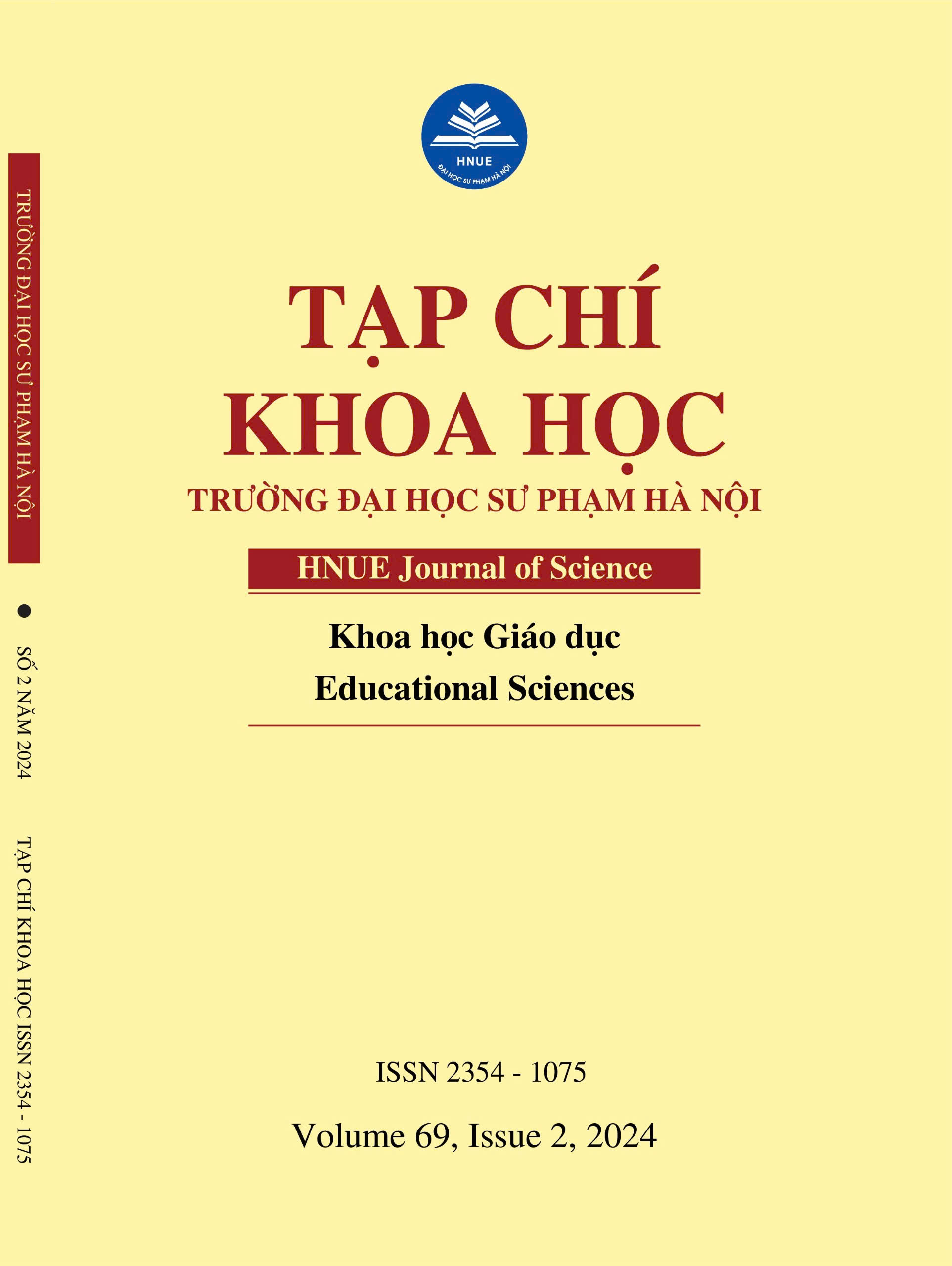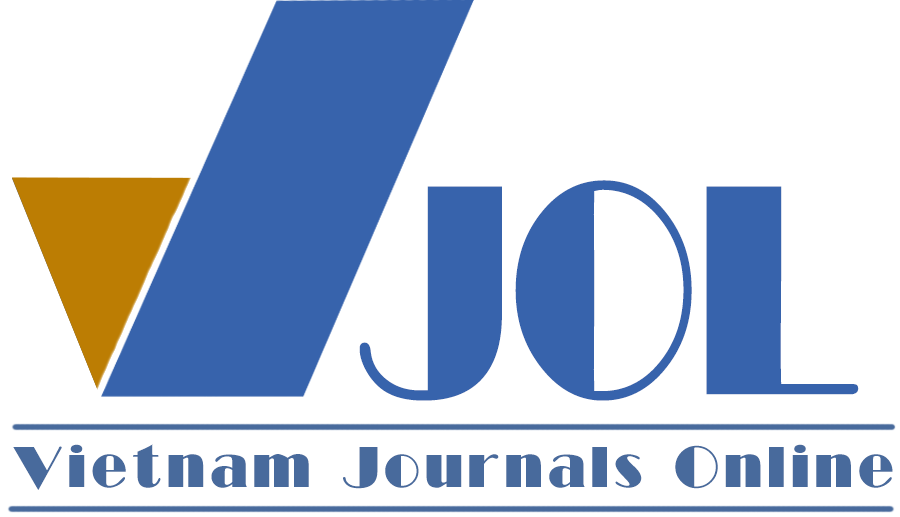TEACHERS’ PERSPECTIVES ON THE IMPLEMENTATION OF THE SYNCHRONOUS ENGLISH PROGRAM AT HO CHI MINH CITY OPEN UNIVERSITY
DOI:
https://doi.org/10.18173/2354-1075.2024-0019Keywords:
online teaching and learning, synchronous online, non-major English, universityAbstract
This study investigates lecturers' opinions on the non-major English program level A, which is currently being implemented in a synchronous online mode at Ho Chi Minh City Open University. A survey was conducted with the participation of lecturers who teach online for the program. Quantitative data were collected through questionnaires with the participation of all 23 lecturers, and qualitative data were obtained through interviews with 10 lecturers. The findings show that the lecturers believe that the program has prepared students quite well for the course and that both lecturers and students have the capacity and conditions to participate in this type of program. However, they still face various difficulties when teaching Speaking and Pronunciation skills as well as classroom management. These difficulties are due to the nature of synchronous online teaching, poor internet connection from students, technical issues, and most notably, some students’ attitudes that are not suitable for online learning. The lecturers also contributed some opinions on the regulations of the university on students’ behavior and exams for non-major English classes in synchronous online mode. Based on the above results, we propose some solutions to improve the effectiveness of the program.
Downloads
References
[1] Frank M, (1997). “Asynchronous learning networks: a Sloan Foundation perspective,” Journal of Asynchronous Learning Networks, 1(1), 3-16.
[2] Stephan H, (2008). “Asynchronous and Synchronous E-learning,” Educause Quarterly, Vol. 4, 51-55.
[3] Ayesha P, (2016). “Synchronous and Asynchronous E-Language Learning: A Case Study of Virtual University of Pakistan”. Open Praxis, Vol. 8, No.1. DOI:10.5944/openpraxis.8.1.212.
[4] Benjamin LM & Kevin MW, (2022). “Blending asynchronous and synchronous digital technologies and instructional approaches to facilitate remote learning”. J. Comput. Educ, 9, 51–70. DOI:10.1007/s40692-021-00195-8
[5] Syamsiarna N, Ratna D, Hasnawaiti & Radiah H, (2022 ). “The Effect of Online Learning on Academic Writing Course During Covid-19 Pandemic,” VELES Voice of English Language Education Society, 6(1). DOI: 10.29408/veles.v6i1.5220
[6] Sarimah S & Hilary N, (2006). “Computer-mediated communication in English for specific purposes: A case study with computer science students at Universiti Teknologi Malaysia,” Computer Assisted Language Learning, 19(4-5), 317-339, Doi:10.1080/09588220601043164
[7] Muhammad N, (2021). “Fostering Success and Motivating EFL Learners Using Zoom Meeting: A Synchronous Learning Strategy,” Anglophile Journal, 1(2), 1-12. DOI: 10.51278/anglophile.v1i2.174
[8] Yun Jeong P & Curtis JB, (2007). “Synchronous learning experiences: Distance and residential learners’ perspectives in a blended graduate course.”. Journal of Interactive Online Learning, 6(3), 245-264.
[9] Lisa CY, (2014). “Blending Online Asynchronous and Synchronous Learning”. International Review of Research in Open and Distributed Learning, 15(2), 189–212. DOI: 10.19173/irrodl.v15i2.1778
[10] VV Loc, NN Vu & VT Linh, (2021). “EFL Students’ Attitudes Towards the Ease of Use Mobile Technology to Learn English at a University in Vietnam”. Proceedings of the 18th International Conference of the Asia Association of Computer-Assisted Language Learning, DOI:10.2991/assehr.k.211224.028
[11] Yen-Tzu C, Che-Hung L & Roman W, (2007). “The Adoption of Synchronous and Asynchronous Media in the Teaching of a Second Language”. Issues In Information System, 8, 217-223
[12] Nian-Shing C, Hsui-Chia K, H., Kinshuk & Taiyu L, (2005). “A Model for Synchronous Learning Using the Internet”. Innovations in Education and Teaching International, 42(2), 181-194. DOI: 10.1080/14703290500062599
[13] DTM Trang, NV Thuyen, HA Quốc,…, Irma K, (2021). “Evaluating Online Learning and Teaching at the University of Technology and Education Ho Chi Minh City During Corona Virus Pandemic”. Journal of Technical Education Science, 62, 17-27. DOI: 10.54644/jte.62.2021.58
[14] LTM Hanh, NVK Long, NT Sơn & VN Hoa, (2023). Factors affecting learner’s satisfaction towards online learning during COVID-19 pandemic: A case study of Vietnam”. International Journal of Evaluation and Research in Education, 12(1), 274-283. DOI: 10.11591/ijere.v12i1.23539
[15] Eric A, (2015). “Enhancing the online class: Effective use of synchronous interactive online instruction,” Journal of Instructional Pedagogies, 17, 1-6.
[16] Ursula S, Regine H & Martine E, (2020). “A developmental framework for online language teaching skills,” Australian Journal of Applied Linguistics, 3(1), 133-151.
[17] Wallace H, (2002). “Web-based training: advantages and limitations,” in Web-based training, B. H. Khan, Ed. Englewood Cliffs, NJ: Educational Technology Publications, 13–20.
[18] Kara M & Kristy BF, (2008). “Students' Role in Distance Learning,” in Opening Doors through Distance Language Education: Principles, Perspectives, and Practices, S. Goertler & P. Winke, Eds. San Marcos, TX: CALICO, 43-66.
[19] TC Thanh, VL Anh, NM Phuong, HNN Y & VTL Anh, (2024). “Factors Influencing University Student Satisfaction with Online Learning in Vietnam”. VNU Journal of Science: Education Research, special issue. Doi: 10.25073/2588-1159/vnuer.4862
[20] Scott M & Phil S, (2015). “Benefits of Synchronous Online Courses”. 2015 ASCUE Proceedings, pp.41-48.
[21] Lily KLC, (2009). “Preparing Language Teachers to Teach Language Online: A Look at Skills, Roles, and Responsibilities”. Computer Assisted Language Learning, 22(1), 73-99.
[22] TV Thanh, NT Huong, NT Nhi, & LV Vinh, (2021). “The Opinion of Lecturers in Universities on Online Learning in the Context of the Covid-19 Pandemic: a Case Study in Vietnam”. Palarch’s Journal of Archaeology of Egypt/Egyptology, 18(9), 1515-1525. DOI:10.20448/jeelr.v10i3.4885
[23] Maheshwari G, (2021). “Factors affecting students’ intentions to undertake online learning: an empirical study in Vietnam”. Education and Information Technologies, 26(6), 6629–6649. DOI: 10.1007/s10639-021-10465-8
[24] PLH Nhung, BN Trân và ĐC Thành, (2023). “Các nhân tố tác động đến hiệu quả học trực tuyến của sinh viên Trường Kinh tế, Trường Đại học Cần Thơ”. Tạp chí Khoa học Trường Đại học Cần Thơ, 59(3c), 161-171. DOI: 10.22144/ctu.jvn.2023.144
[25] NT Nga & TTT Huong, (2022). “Factors Affecting Students’ Desire to Take Upcoming Online Courses after E-learning Experience During COVID-19”. International Journal of Interactive Mobile Technologies (iJIM). DOI: 10.3991/ijim.v16i01.26777
[26] Joseph FHJ, William CB, Barry JB & Rolph EA, (2010). “Multivariate Data Analysis”. Pearson Education.
[27] BTT Quyên và LP Thảo, (2023). “Nhận thức của sinh viên tiếng Anh không chuyên về việc học trực tuyến đồng bộ: Nghiên cứu trường hợp tại Trường Đại học Mở Thành phố Hồ Chí Minh”. Tạp chí Giáo dục, Bộ Giáo dục và Đào tạo, 23(11), 264-269.







